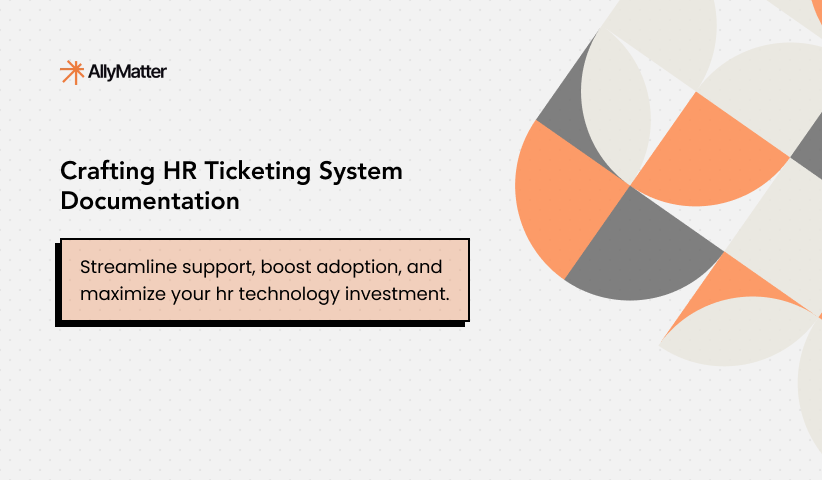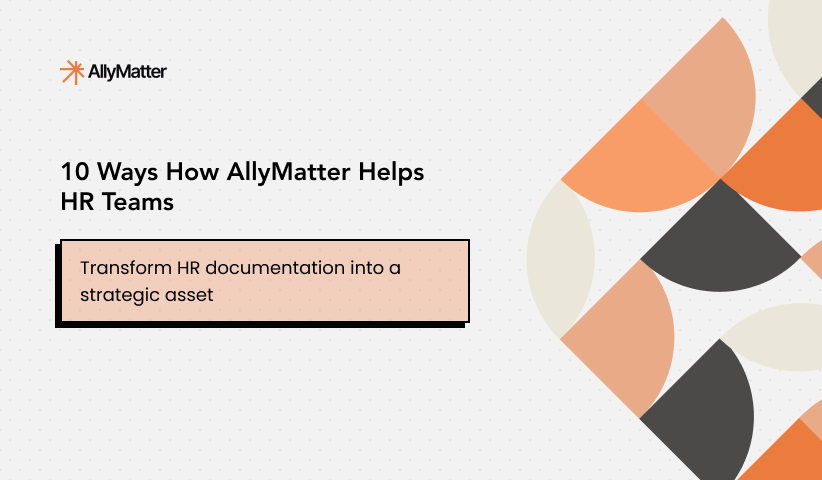A well-structured internal knowledge base is a game-changer for HR departments in growing companies. It serves as a central repository for critical information, streamlining HR processes, enhancing employee experience, and ensuring consistency in communication. Whether you’re a startup, a growth-stage company, or an enterprise, an HR knowledge base can significantly improve efficiency.
Here are some of the key ways an internal KB can support HR functions, along with additional use cases that further demonstrate its impact.
1. Employee onboarding and training
Starting a new job can be overwhelming, but a structured onboarding process makes it smoother. Organizations with sophisticated onboarding programs are 103% more likely to see improvements in new hire retention and employee engagement, according to research by Brandon Hall Group. An internal knowledge base can centralize all onboarding materials, reducing information overload and giving new hires everything they need to get up to speed quickly.
- Provides new employees with step-by-step guides, checklists, and policies
- Minimizes reliance on HR teams by answering common questions
- Eliminates the hassle of searching through scattered emails and outdated documents
- Enhances productivity from day one by reducing downtime
- Increases retention by offering clarity and support throughout the onboarding process
Example: Instead of emailing HR every time a new hire needs access to software tools, they can refer to an SOP in the knowledge base with step-by-step login instructions and access request guidelines.
2. Benefits and compensation
Understanding benefits and compensation is crucial for team members, but HR teams often get bombarded with repetitive questions. A knowledge base can provide clear, structured information about compensation plans and benefits.
- Centralized information on salary structure, bonuses, and incentives
- Details on healthcare benefits, paid leave, and flexible work policies
- Clear timelines for open enrollment and benefit changes
- Reduces misunderstandings about pay and perks
Example: Instead of waiting for HR’s response, an employee can instantly find details about their medical benefits, coverage limits, and claim processes in the knowledge base.
3. Company policies and procedures
Outdated policies can lead to confusion and compliance risks. A knowledge base ensures that all employees have access to the latest workplace policies and guidelines.
- Houses company policies, code of conduct, and workplace expectations
- Reduces policy-related errors and misunderstandings
- Easy to update so all employees access the latest information
Example: A team member unsure about the company’s remote work policy can find a detailed breakdown in the knowledge base instead of emailing HR.
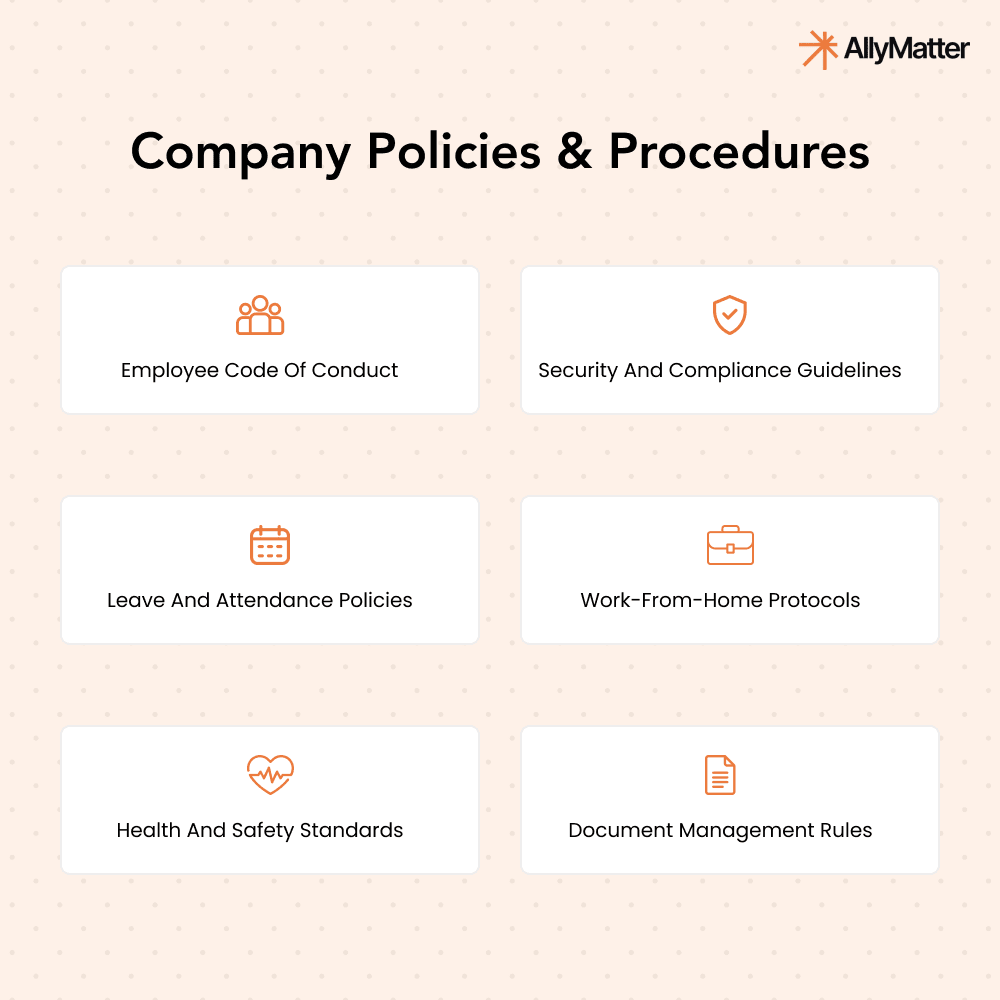
4. Performance management guidelines
Performance reviews can be complicated without standardized processes. A knowledge base simplifies performance tracking and feedback mechanisms.
- Outlines performance evaluation processes and criteria
- Provides structured feedback templates and goal-setting frameworks
- Stores past performance review records for reference
Example: A manager conducting a quarterly review can quickly refer to the knowledge base for best practices on giving constructive feedback.
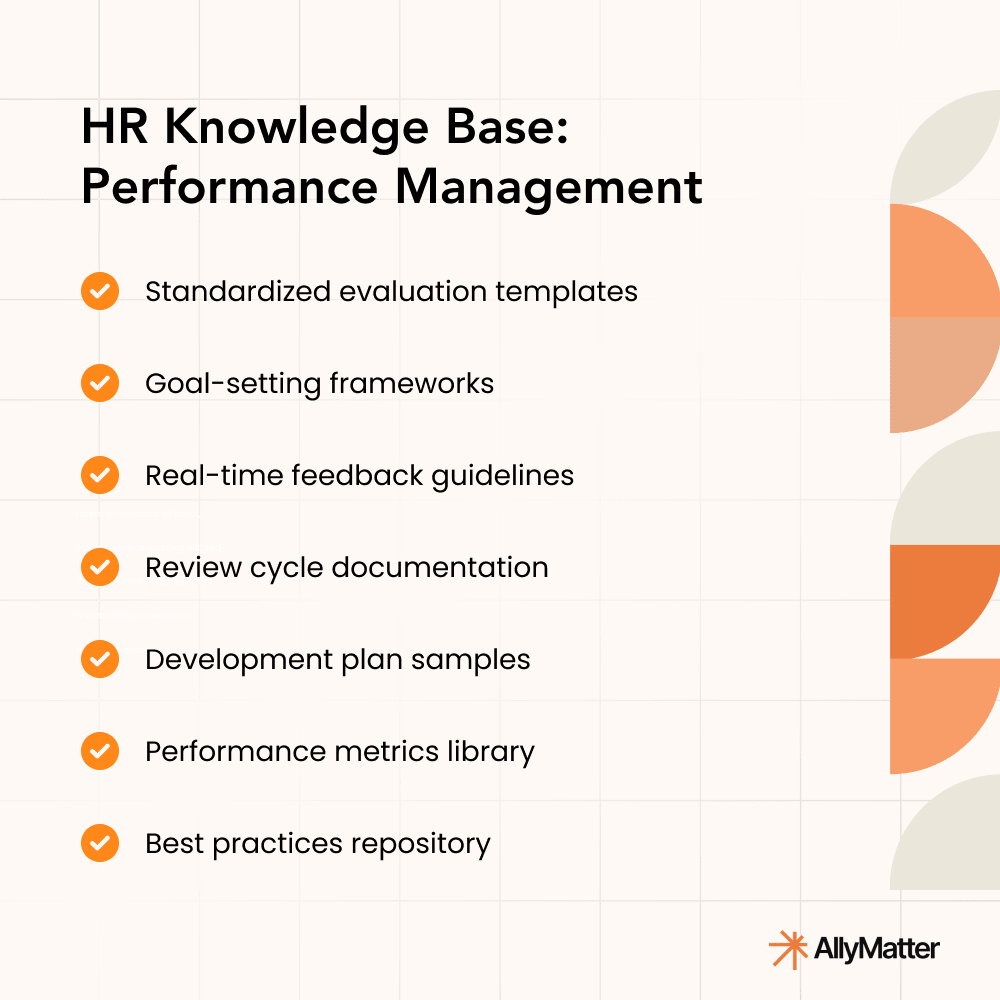
5. Compliance and legal requirements
Ensuring legal compliance is one of HR’s biggest responsibilities. A knowledge base acts as a single source of truth for legal guidelines and compliance policies.
- Houses labor laws, anti-discrimination policies, and workplace safety regulations
- Ensures team members follow consistent guidelines
- Reduces legal risk by keeping compliance documents easily accessible
Example: An employee can check the knowledge base for workplace harassment policies and reporting procedures instead of asking HR.
6. Learning and development resources
A culture of continuous learning drives employee growth. According to the LinkedIn Workplace Learning Report, 94% of employees say they would stay at a company longer if it invested in their career development. A knowledge base fosters this by centralizing learning materials.
- Provides access to online courses, industry insights, and expert guidance
- Helps employees upskill at their own pace
- Enables HR to update and refine learning resources over time
Example: A marketing team member looking to improve their copywriting skills can find recommended courses and templates in the knowledge base.
7. Exit and offboarding procedures
When employees leave, a structured offboarding process ensures a smooth transition. A knowledge base can help standardize exit procedures.
- Provides step-by-step guides for resignation and knowledge transfer
- Stores exit interview templates and final checklist items
- Ensures company assets and credentials are properly retrieved
Example: An employee resigning can refer to an SOP that outlines how to return equipment, access final pay slips, and complete exit documentation.
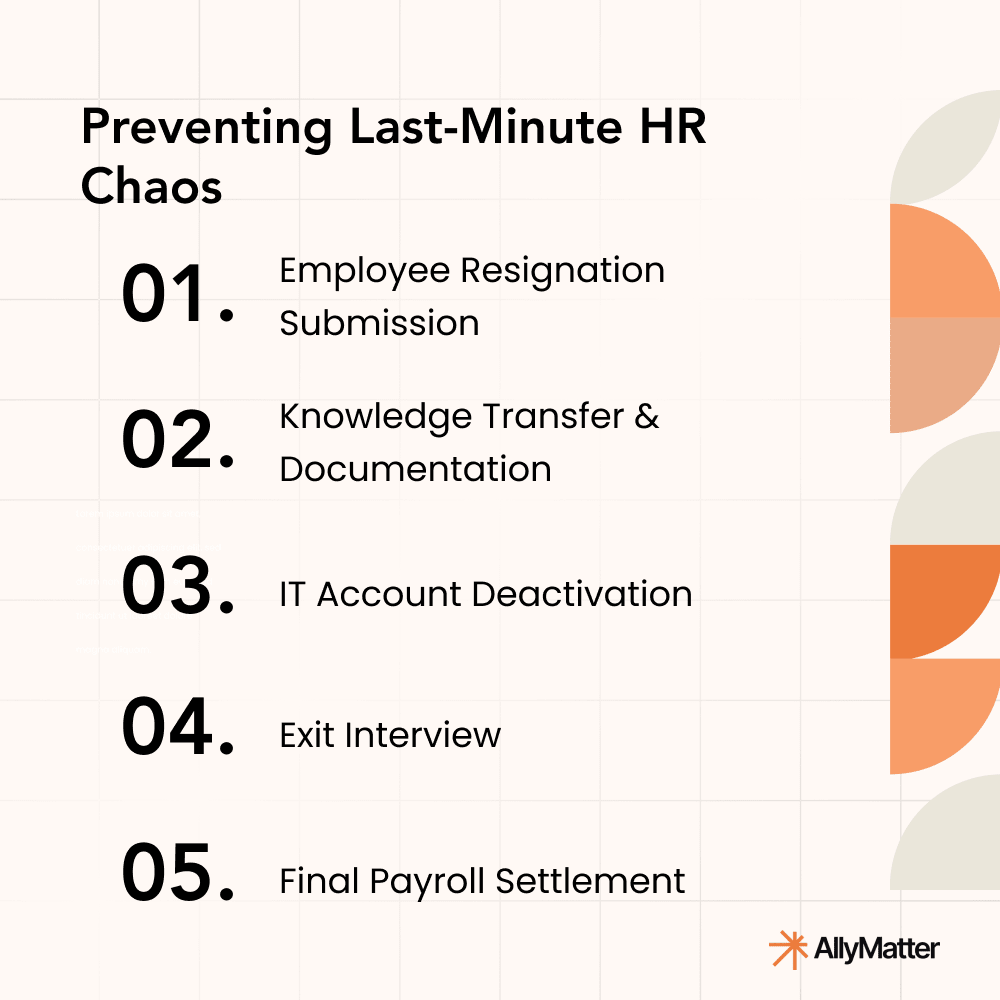
8. Employee engagement and well-being programs
Happy employees contribute to a thriving workplace. HR teams can use a knowledge base to enhance employee engagement and well-being.
- Centralizes wellness program details, mental health resources, and engagement activities
- Provides guides on work-life balance, stress management, and support programs
- Improves participation in company events and well-being initiatives
Example: A team member feeling overwhelmed can find mental health resources and counseling contacts directly in the knowledge base instead of searching for HR emails.
9. Internal job postings and career progression
A transparent career progression system keeps employees motivated and engaged. A knowledge base helps by centralizing internal job postings and career growth resources.
- Provides up-to-date listings of internal job opportunities
- Outlines career progression frameworks and promotion criteria
- Helps employees plan their career growth within the company
Example: A team member looking for a leadership role can refer to the knowledge base to check eligibility criteria and required training programs.
10. Conflict resolution and workplace support
Workplace conflicts are inevitable, but structured resolution processes can help mitigate issues. An internal knowledge base provides clarity on handling workplace disputes and seeking support.
- Details conflict resolution policies and escalation procedures
- Outlines workplace mediation options and HR contact points
- Encourages a healthy and respectful work environment
Example: If an employee faces a workplace dispute, they can refer to the knowledge base for steps to resolve the issue before escalating it formally.

An internal KB is more than just a repository—it is a strategic tool that enhances efficiency, transparency, and employee experience. By centralizing critical HR processes, it reduces the burden on HR teams while ensuring employees have easy access to important information. From onboarding and compliance to career growth and workplace well-being, a well-maintained knowledge base supports every stage of an employee’s journey. As companies grow, maintaining structured and updated documentation becomes essential to scaling operations smoothly while fostering a positive work culture.

